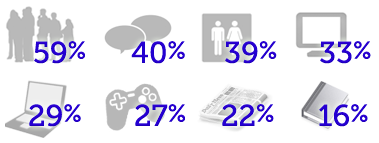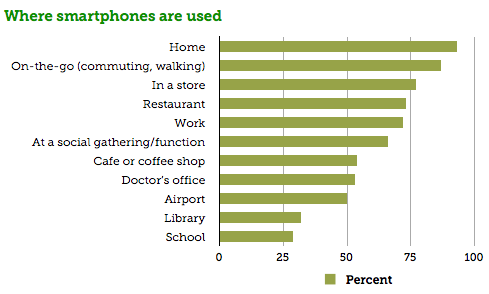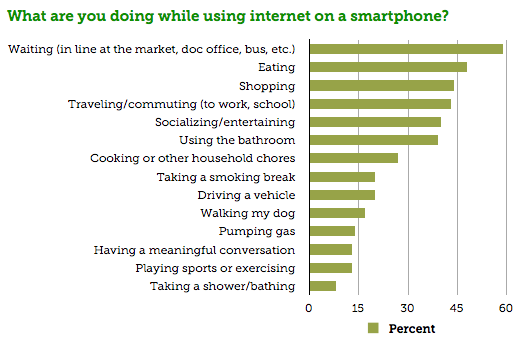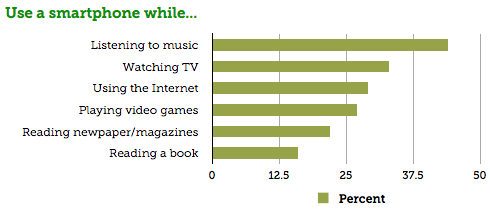Community Embraces New Word Game at Mid-Year Play Day This past Sunday, families at Takoma Park’s Seventh Annual Mid-Year Play Day had the opportunity to experience OtherWordly for the first time. Our educational language game drew curious children and parents to our table throughout the afternoon. Words in Space Several children gathered around our iPads […]
Read moreSmartphones (e.g., the iPhone or Android) are commonplace, and education outreach projects need make use of this reality. People use their smartphones while doing all kinds of things. For example:

(Left to right, top: while waiting in line, socializing, in the bathroom, while watching TV; bottom: while using a computer, playing video games, reading a paper, or a book.)
The most common place to use a smartphones is at home (93% of smartphone owners), but people use their smartphones all kinds of places:

While people are out and about, they are often doing other things at the same time they are using their smartphone. These are opportunities for educational outreach. Time spent waiting and commuting are particularly good time windows of idle time which could be filled with art or science:

Aside from making phone calls, smartphones serve as pocket PCs, extending the desktop/laptop experience. 81% of smartphone users browsed the internet within the last week, 77% used a search engine, 68% used an app, and 48% watched videos. Moreover, 72% use their smartphone while consuming other media. Here’s how people multitask:

Source: Data fromes from The Mobile Movement Study, Google/Ipsos OTX MediaCT , Apr 2011. N = 5,013 US online adults (18-64 years of age) who identified themselves as using a smartphone to access the Internet were interviewed. Data collected Q4 2010. From Google Think Insights.

